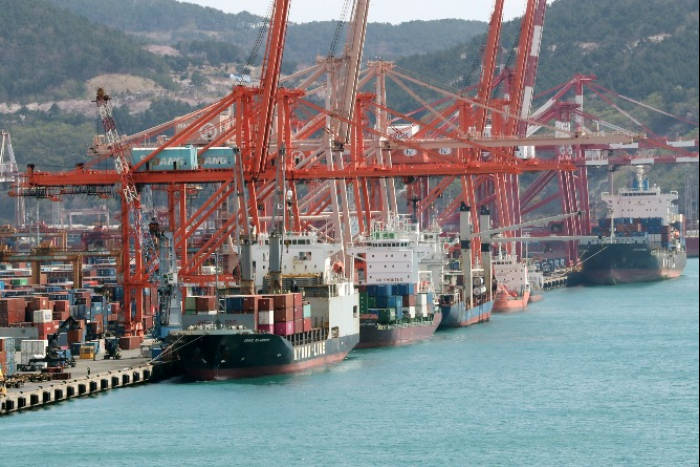Energy
Korea's petroleum product exports hit record-high $28 bn in H1
Exports were boosted by surging oil prices and demand; H2 outlook cloudy
By Jul 26, 2022 (Gmt+09:00)
2
Min read
Most Read
LG Chem to sell water filter business to Glenwood PE for $692 million


Kyobo Life poised to buy Japan’s SBI Group-owned savings bank


KT&G eyes overseas M&A after rejecting activist fund's offer


StockX in merger talks with Naver’s online reseller Kream


Mirae Asset to be named Korea Post’s core real estate fund operator



South Korea’s top four oil refiners exported a combined $27.96 billion worth of petroleum products during the first half of 2022. This marked the highest-ever half-year performance, helping support the nation's economic fundamentals.
The top four refiners are SK Energy Co., GS Caltex Corp., S-Oil Corp. and Hyundai Oilbank Co. Their aggregate exports in the first half increased by 97.7% from a year earlier, according to the Korea Petroleum Association on Tuesday.
Petroleum exports were boosted by surging global oil prices and growing demand for petroleum products this year.
The average export price of petroleum products came to $126.6 per barrel in the first half of 2022, up 75.3% from $72.2 a year ago. Exports in the first half reached 220.9 million barrels, a 12.8% year-on-year increase.
By product, diesel exports reached $12.56 billion in the first half, marking a 106.2% increase from the same period last year. Gasoline exports reached $6.33 billion with a 105.8% hike, and aviation fuel exports amounted to $4.69 billion, posting a whopping 171.3% increase. Naphtha exports were $1.24 billion, rising by 33.6% on-year.
Aviation fuel exports soared in line with surging demand in the US. The country saw 357 million airport visitors during the first half, up 51.3% from the same period last year, the US Transportation Security Administration said.
By country, Australia was the largest importer of Korean petroleum products, taking 16.2% of all exports. Singapore, the US and the Phillippines followed, importing 12.2%, 9.3% and 9.0%, respectively. China imported 8.6% of the Korean products.
Profitability has also improved. The export prices of petroleum products minus the import prices of crude oil rose to $24.8 per barrel, compared with $8.6 a year ago.
Petroleum product exports enhanced Korea’s trade balance, covering 61% of the country’s crude oil imports during the first half. They ranked second in terms of Korea’s main export categories, after semiconductors. By contrast, petroleum products ranked fifth in the first half of 2020 and 2021.
Some critics say Korea should export more gasoline and diesel and use less on the home front. They argue that more petroleum exports will improve both the country’s trade balance and refiners’ profitability – Korean refiners have set low oil refining margins due to concerns about the introduction of the windfall tax, a tax on the firms’ extra gains resulting from surging oil prices.
Despite the record-high exports in the first half, the outlook for the second half is cloudy. Global demand for petroleum products is shrinking due to fears of a global recession, and the refining margin keeps dropping, a Korea Petroleum Association official said.
Write to Ik-Hwan Kim at lovepen@hankyung.com
Jihyun Kim edited this article.
More to Read
-
 EnergyKorea's top refiners likely to see strong 2022 despite tax concerns
EnergyKorea's top refiners likely to see strong 2022 despite tax concernsJul 13, 2022 (Gmt+09:00)
3 Min read -

-
 Electric vehiclesKorean refiners: Lubricating the future of electric vehicles
Electric vehiclesKorean refiners: Lubricating the future of electric vehiclesApr 17, 2022 (Gmt+09:00)
2 Min read -
 EconomyAutomobile, chemical, refinery lead manufacturing sector revival
EconomyAutomobile, chemical, refinery lead manufacturing sector revivalApr 03, 2022 (Gmt+09:00)
3 Min read -
 EnergyESG fever puts Korean oil refiners in quandary over facility upgrades
EnergyESG fever puts Korean oil refiners in quandary over facility upgradesJan 16, 2022 (Gmt+09:00)
3 Min read
Comment 0
LOG IN


